Parks Canada strikes 1st agreement with Indigenous group to run national historic site
Partnership comes after more than 20 years of advocacy by Timiskaming First Nation
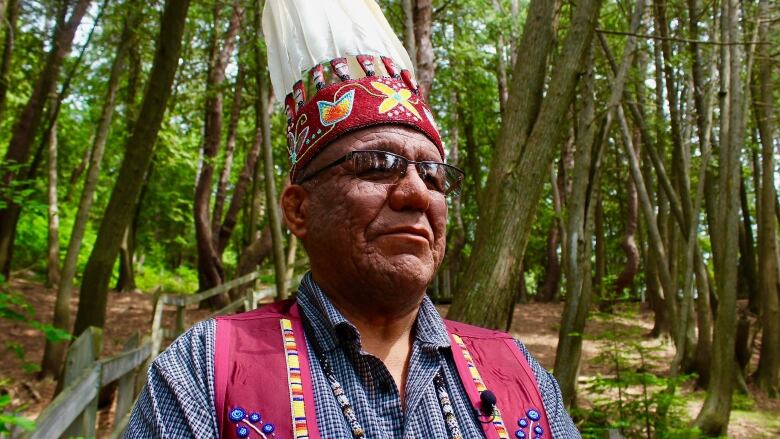
As Wayne McKenzie leans in to take a closer look at the twisted cedar branches off the coast of Lake Timiskaming in northwestern Quebec, he starts to sing a prayer.
McKenzie's Algonquin ancestors are buried at the foot of these woods. Legend has it that their souls live on in the trees. The trees are unusually curved, which is said to be because the elders dance, says McKenzie,who is chief of Timiskaming First Nation.
McKenzie's prayer is one of gratitude to the former leaders of his community, who laid the foundation for him to sign a one-of-a-kind agreement with the federal government to protect the area.
Ottawa has transferred half of Parks Canada's ownership to a trust for Timiskaming First Nation to co-manage the Obadjiwan-Fort Tmiscamingue National Historic Site.
"It's overwhelming," McKenzie said. "It took a while, but it's here and it can show to the nation that you can work these [issues] out."
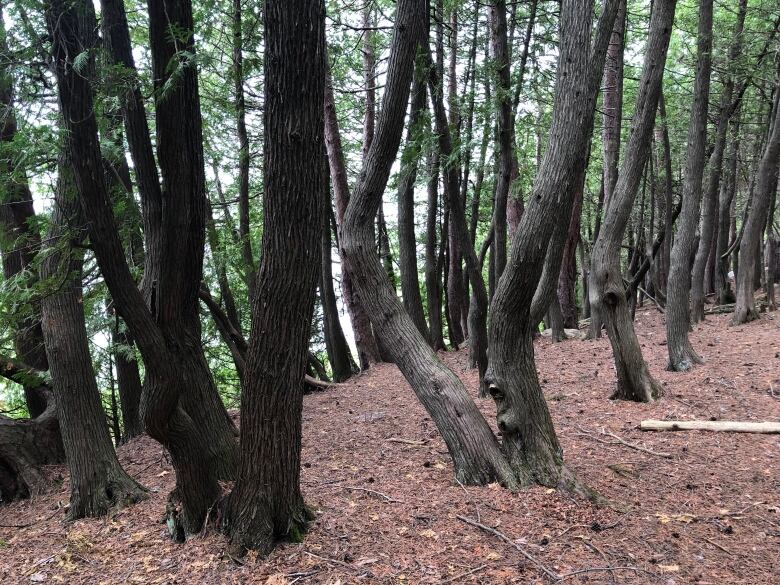
Obadjiwan, which means the strait where the current flows, is being added to the name of the fort and a plaque is set to be installed to indicate Algonquin presence on the grounds dating back more than 6,000 years.
The park, 460 kilometres north of Ottawa, has only remnants of the original trading fort, but is home to the "enchanted forest" where Algonquin elders are buried,hiking trails and an interpretive centre.
Algonquin educator Dianna Wabiesaysthe partnership allows Timiskaming First Nation to be part of the long-term management of the site and no longer be thought of as an afterthought.
Wabie wants to see an expansion of Anishnabe culture at the site with more ceremonies and feasts. She also wants to see the continuation of a summer youth program, which trains two young Algonquin people to share language, birch bark and leather work with visitors.
"This site is where my ancestors walk. This site is living history," Wabie said.
"Sometimes when people refer to Native people, they talk of us as though we're part of a history book or in the past, but we're very much alive and this site is an opportunity for us to really show that we're very much here."
Working together in harmony
Wabie also thinks the partnership can be used as a model for Indigenous communities who want to reclaim their historic sites.
"I really believe that our community has set the groundwork for other First Nations across Canada to engage in these kind of negotiations and to come to this point where national historic sites are celebrating the First Nations' presence, as well as the European settlers that came and who are still here as well."
First Nations people's contribution have not always been recognized at Fort Tmiscamingue.
Europeans arrived in the 17th century to establish a fur trading post. The location was ideal: a 21-day paddle to Montreal and the markets, and 25 days to HudsonBay and bigger trading posts.
In the late 1880s, the Timiskaming people were pushed off the land around Obadjiwan. They relocated 40 kilometres north at the head of Lake Timiskaming. But they continued to considerthe grounds and resources at Obadjiwan part of their home.
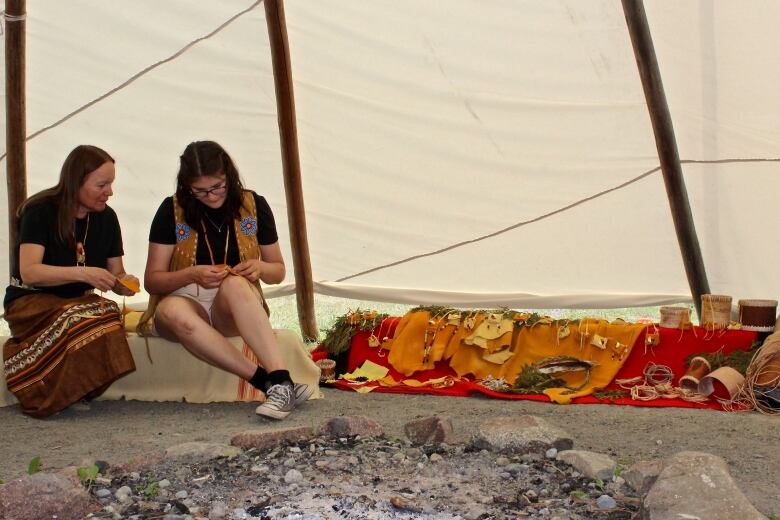
The trading post shut down in 1902, asfur trading declined.
It was declared a national historic site in 1932, but the Algonquin were not officially part of its planning until Timiskaming First Nation signed the official co-partnership deal on July 5 with Parks Canada.
The agreement comes after more than 20 years of advocacy by Algonquin leadership.
The tipping point came in the late 1990s when Parks Canada dug up burials, including remains, while doing an excavation.
"They didn't consult with us first," McKenzie said. "Our ancestors have been buried here and they didn't consult with us then, and so back then, [our people]blockaded the entrance."
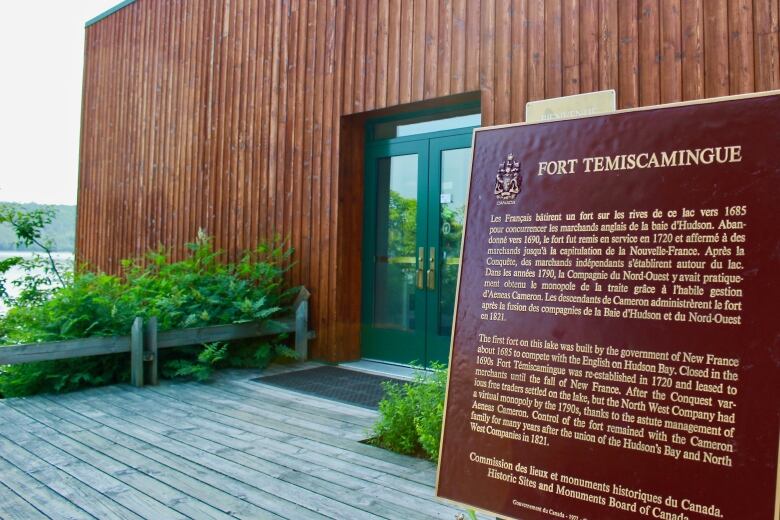
The blockade by the Algonquin only lastedabout a week, but it put enough pressure on Parks Canada to shut the site down for two years following the demonstration.
It re-opened when the Algonquin and the federal government came to a compromise on how to move forward.
An education in Algonquin culture
On the shores of Lake Timiskaming, Emma Chevrier, who is taking part in a youth program at the park,reads a poem out loud.
"I know who I am," Chevrier recites.
"I am a descendantof a strong, proud, hardworking peoplewho dipped their paddles into this lake and arrived on the shores of Obadjiwan."
It's part of a poem that her teacherWabie wrote when she first visited Fort Tmiscamingue.
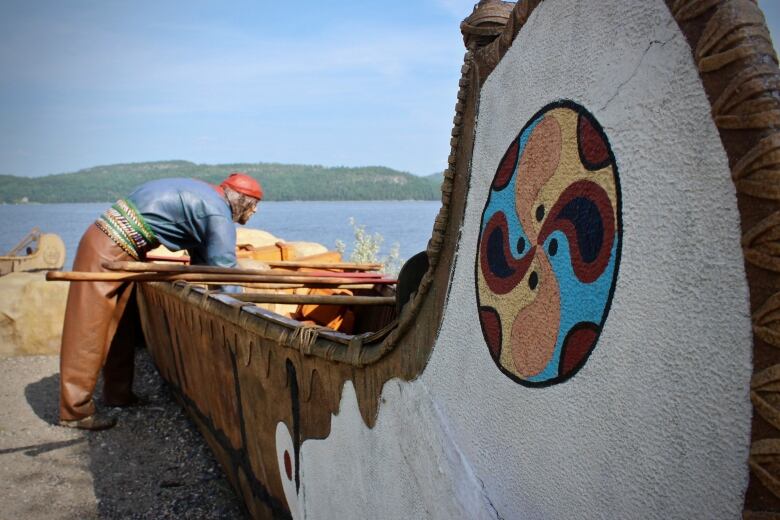
Though the path forward to this agreement has been long, both sides say it's rewarding.
"We have the same goal," said Daniel Beaudin, Parks Canada manager of national historic sites in western Quebec.
"The Canadian government is really focused on its commitment to reconciliation, so Parks Canada was really open to work with the community."
Parks Canada and Timiskaming First Nation are now in the process of electing four trustees each to work on a long-term plan for the site.
McKenzie wants to see more Algonquin people working alongside Parks Canada staff so future generations can learn about their culture and pass on the newfound connection to others.
"We can work together in harmony Canada and the Anishnaabe people," McKenzie said.
"I think that's why we have conflicts a lot of times. They just want to know who we are. As Anishinaabe people, we're about love, honour, respect and generosity."
"This site is really in our hearts," he said."It's very sacred, especially in these trees here. You can just feel the goodness."












_(720p).jpg)


 OFFICIAL HD MUSIC VIDEO.jpg)
.jpg)



























































































